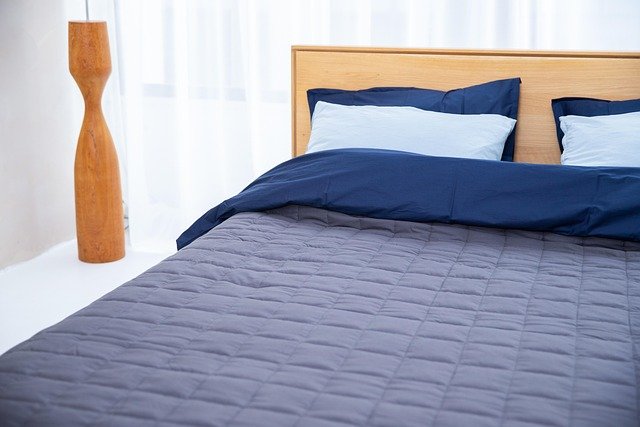The Art of Layering: Mastering Texture in Bedroom Design
Creating a luxurious and inviting bedroom goes beyond selecting a color palette and arranging furniture. One of the most overlooked yet crucial aspects of bedroom decor is the skillful use of texture. Texture adds depth, interest, and a tactile quality to a space, transforming it from a flat, two-dimensional room into a rich, multifaceted environment. By incorporating a variety of textures through different materials, fabrics, and surfaces, designers can create a sensory experience that elevates the overall ambiance of a bedroom. This technique, known as layering, is a fundamental principle in interior design that can dramatically enhance the comfort and visual appeal of any sleeping space.

The Psychology of Texture
Texture plays a significant role in how we perceive and interact with our environment. In bedroom design, the use of texture can evoke specific emotions and create a desired atmosphere. Soft, plush textures like velvet or faux fur can promote feelings of comfort and relaxation, making them ideal for bedding and seating areas. Conversely, rougher textures like jute or sisal can add a natural, earthy element to the space, grounding the overall design. The interplay between smooth and rough surfaces creates visual interest and can help balance the room’s energy.
Historical Context of Textural Design
The use of texture in interior design has roots in various historical periods and cultural traditions. In medieval European castles, tapestries were hung on stone walls not only for decoration but also for insulation, introducing both visual and tactile texture to otherwise austere spaces. The Victorian era saw an explosion of textural elements, with ornate wallpapers, intricate carved furniture, and layered fabrics adorning bedrooms. In contrast, the minimalist movement of the mid-20th century embraced clean lines and smooth surfaces, often incorporating natural materials like wood and stone to add subtle textural interest.
Key Elements for Textural Layering
When incorporating texture into bedroom design, several key elements come into play. The bed, as the focal point of the room, offers numerous opportunities for layering. Starting with a textured headboard, such as tufted fabric or weathered wood, sets the tone for the entire space. Layering bedding with different fabrics and weights adds depth and comfort. A smooth cotton sheet paired with a chunky knit throw and silk pillowcases creates a rich tapestry of textures that invites touch and relaxation.
Beyond the Bed: Texture Throughout the Room
While the bed is a natural starting point for textural exploration, the entire room benefits from thoughtful layering. Wall treatments offer an excellent canvas for texture, from grasscloth wallpaper to textured paint techniques or even fabric-covered panels. Flooring plays a crucial role in the overall textural composition of the room. A plush area rug layered over hardwood or tile adds warmth and softness underfoot, while also defining the sleeping area within larger spaces.
Mixing Materials for Maximum Impact
One of the most effective ways to create a rich, textured environment is by mixing different materials throughout the bedroom. Combining wood, metal, glass, and fabric creates a dynamic interplay of textures that keeps the eye moving and the senses engaged. For example, a sleek metal bed frame can be softened with linen curtains and a leather ottoman, while glass bedside lamps add a smooth, reflective element to the mix. The key is to strike a balance between contrasting textures to avoid overwhelming the space.
The Role of Lighting in Enhancing Texture
Lighting plays a crucial role in highlighting and enhancing textural elements in bedroom design. Different light sources can dramatically alter how textures are perceived. Soft, diffused lighting from table lamps or wall sconces can create subtle shadows that emphasize the depth of textured surfaces, while directional lighting can be used to highlight specific textural features, such as a statement wall or a piece of sculptural art. Natural light also interacts with textures in unique ways, changing the appearance of fabrics and surfaces throughout the day.
Seasonal Texture Changes
One of the advantages of using texture as a design element is the ability to easily update the look and feel of a bedroom with the changing seasons. In colder months, incorporating heavier textures like wool throws, velvet pillows, and faux fur rugs can create a cozy, insulating effect. As the weather warms, these can be swapped out for lighter textures like linen, cotton, and jute, refreshing the space and maintaining a comfortable environment year-round.
Balancing Texture with Color and Pattern
While texture is a powerful design tool, it’s important to consider how it interacts with other elements of the room, particularly color and pattern. In rooms with bold colors or intricate patterns, texture can provide a subtle way to add interest without competing visually. Conversely, in neutral or monochromatic spaces, texture becomes even more important in creating visual depth and preventing the room from feeling flat or boring. The key is to find a harmonious balance that enhances the overall design without overwhelming the senses.
The Transformative Power of Texture
Mastering the art of layering texture in bedroom design can transform a space from ordinary to extraordinary. By carefully selecting and combining a variety of textures throughout the room, designers can create a rich, inviting environment that engages the senses and promotes relaxation. Whether working with a minimalist aesthetic or a more maximalist approach, the thoughtful incorporation of texture adds depth, interest, and a personal touch to any bedroom. As we continue to spend more time in our homes, the importance of creating spaces that are both visually appealing and tactilely satisfying has never been more apparent. The art of layering texture offers endless possibilities for creating bedrooms that are not just places to sleep, but true sanctuaries for rest and rejuvenation.





